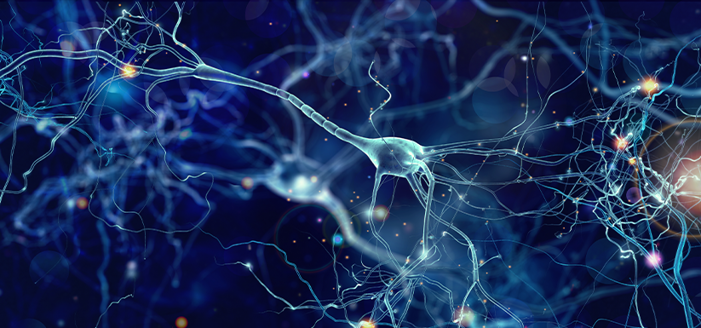
Why do people sneeze when they look into the sun?
November 8, 2007

- Related Topics:
- Quirky questions,
- Autosomal dominant inheritance
A curious adult from California asks:
"Why do people sneeze when they look into the sun?"
Editor’s Note (8/19/21): While this article describes photic sneeze reflex as an autosomal dominant trait, more recent work suggests that it’s not that simple. For example, while 23andMe researchers did identify 1 genetic variant in 2010, since then they have identified at least 54 different genetic markers that are associated with sneezing in bright light!
Wait a second! People sneeze when they look into the sun? I hadn't even heard of that until you asked your question!
But you're right. About 25% of people sneeze when they look at the sun or another bright light.
Sun-sneezing has been called everything from photic sneeze reflex to ACHOO syndrome (for autosomal dominant compelling helio ophthalmic outburst). But no one really knows what's going on.
Our best guess is that there's an accidental crossing of pathways in the brain. And even though we don't know which gene(s) might be involved, we do know that ACHOO syndrome runs in families.
Before we try to figure out the genetics of ACHOO syndrome, let's start with a simpler question. What is sneezing, anyway?
It's actually a pretty complicated process! Sneezing begins with an irritation in your nose. This excites a nerve in your nose (the trigeminal nerve) that sends a signal to the 'sneezing center', a special part of your brain.
This sneezing center responds by sending out a whole bunch of instructions. It tells your nose to release fluid to wash away the irritation. And it tells muscles in your abdomen and chest to take a quick, deep breath and then let out that breath really fast (almost 100 miles per hour!).

Sneezing is a reflex. This means that it happens automatically, without us thinking about it. Just like when a doctor taps your kneecap and you kick your leg up, sneezing is completely out of your control. Just think how hard it is to keep yourself from sneezing. And it's even harder to make yourself sneeze on cue!
Your body has lots of reflexes. Another one of these is called the papillary light reflex, which we'll call the pupil-shrinking reflex.
Your pupils (the black part of your eyes) are important in controlling how much light gets into your eyes. In the pupil-shrinking reflex, shining a light into your eye causes nerves there to send a message to your brain. Your brain responds by sending a message back to your eye telling your pupil to shrink. This prevents bright light from damaging your eyes.
In most people, these two reflexes (sneezing and pupil-shrinking) take different routes through the brain. But in sun-sneezers, there may be a mix-up. Shining a bright light on your eye also sends a message to your sneeze center, which tells you to sneeze. We know that there are lots of nerves packed really close together in your brain. In the case of sun sneezing, the wires (or nerves) are probably crossed just a bit.
And it's not just sunlight that can trigger sneezing. Lots of sun-sneezers say that breathing in cold air, or tasting a strong flavor like mint gum, also makes them sneeze. This suggests that activating any nerve close to the trigeminal nerve (the one involved in sneezing) can cause the sneeze reflex.
OK, so we have a pretty good guess about what happens in the brains of sun-sneezers. But why do only some people sneeze in the sun, whereas other people don't even know that sun-sneezing exists?

The genetics of sun-sneezing
To figure out what is going on, scientists looked at families of sun-sneezers using special charts called pedigrees to search for patterns. They found that if one parent was a sun sneezer, then around half the kids were, too. This is a signature for an autosomal dominant gene.
That sounds pretty complicated, so let's tease it apart. Autosomal means that the gene isn't on the X or Y chromosome. And dominant means that you only need one copy of a gene to be able to 'see' that copy.
Remember, we have two copies of each of our genes — one from mom and one from dad. Each copy is called an allele.
Some alleles are dominant. This means they win out over other alleles. Having just one copy of a dominant allele is enough to 'see' that allele. An example of a dominant allele is brown eyes. You only need one copy of the brown-eyes allele and you'll have brown eyes.
Other alleles are recessive — they tend to hide behind dominant alleles. In this case, you need two copies of a recessive allele in order to actually see the trait that the allele codes for. For example, in order to have red hair, you need two copies of the allele for red hair.
OK, so we know that sun-sneezing is an autosomal dominant trait — you only need one copy of the sun-sneezing gene to be a sun-sneezer. But what is that gene?
Tracking down the sun-sneezing gene(s)
Scientists are still in the dark about the genes(s) involved in sun-sneezing. But we can make some educated guesses about what types of genes might be involved.
We know that nerve cells talk by sending out special chemicals called neurotransmitters. And other nerve cells listen using special 'ears' called receptors.

Maybe sun-sneezers have a gene that makes their trigeminal nerve more sensitive, so it gets activated by the wrong signals. Sun-sneezers could have an allele that makes their trigeminal nerve make more receptors, or the wrong types of receptors. (Click here to learn how scientists can home in on genes associated with certain traits or diseases.)
There doesn't seem to be any advantage to sneezing in the sun, so we don't know why sun-sneezers are so common. Most likely, there was a small group of people a long time ago, and one of those people had a DNA change that made him or her a sun-sneezer. Since that gene change didn't cause any problems, it just stuck around.
So now we know that ACHOO syndrome is encoded in our genes. Sun-sneezers have a certain piece of DNA that's different from non-sun-sneezers. This genetic change is passed down from generation to generation. And it causes a mix-up in the brain, making sunlight trigger a sneezing reflex.
But don't worry. There's nothing wrong with being a sun-sneezer! In fact, if you're a sun sneezer, you're in good company. Here are a couple famous sun-sneezers in history:
Papa Bear of the Berenstain Bears:
‘Bless you!' said Mama. '
It's just this bright sunlight,' sniffed Papa. 'I never get sick.'
-Berenstain and Berenstain (1981)
Aristotle:
‘Why is it that one sneezes more after one has looked at the sun? Is it because the sun engenders heat and so causes movement just as does tickling the nose with a feather? For both have the same effect; by setting up movement they cause heat and create breath more quickly from the moisture; and it is the escape of this breath that causes sneezing.'
-Book XXXIII, 'Problems concerning the nose'
Read More:
- Dominant and recessive alleles
- ScienceInAction: Cool facts about sneezing
- PubMed: Why sun-sneezing might be a problem in the military

Author: Ruth Tennen
When this answer was published in 2007, Ruth was a Ph.D. candidate in the Department of Cancer Biology, studying telomerase regulation in cancer and stem cells in Steve Artandi's laboratory. Ruth wrote this answer while participating in the Stanford at The Tech program.
 Skip Navigation
Skip Navigation
